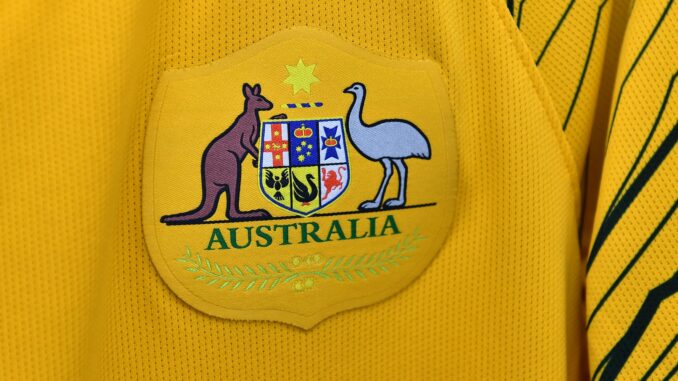
“Asia is expecting us to be a contributing member to the Asian Football Confederation and we will be.”
Those were the words of then Football Federation Australia chairman Frank Lowy the day after that historic night on 16 November 2005, when Australia defeated Uruguay in a dramatic penalty shootout to secure their first FIFA World Cup berth in 32 years.
A little over six weeks later Australia would officially join the Asian Football Confederation, arguably the most significant achievement of the Frank Lowy era. The opportunities it has presented the game in Australia, at all levels, is profound.
But almost 15 years on, it’s worth reexamining that quote and asking the question – has Australia been a contributing member to the Asian Football Confederation?
It’s an answer that has many layers, and speaks to social and cultural challenges across society more broadly as well.
“This isn’t just a discussion point for football, but it’s a discussion point for Australia more generally,” The Asian Game co-host Scott McIntyre explained on our State of the Game feature podcast, on which we explored Australia’s relationship with Asia fifteen years after joining the Asian Football Confederation.
“We’re one-fifth of the way through what (former Australian prime minister) Julia Gillard dubbed ‘the Asian Century’ and I still don’t know how great Australia’s literacy is with Asia, and vice versa.
“I think in most aspects of life in Australia there’s a lack of understanding, there’s a lack of empathy and awareness of many things in our region.”
How many people at Football Federation Australia – especially at board and management level – or within the A-League clubs, speak an Asian language?
English may be the official language of the AFC, but we take for granted the ability of many on the continent to speak English as a second language in order to easily converse, while not ourselves having the same ability.
Being able to converse in another’s native tongue would make a tremendous impression and instantly make forging relationships easier, demonstrating a willingness to engage on their terms, and not just on ours.
This is an important part of relationship building, which as former FFA board member and AFC Executive Committee member, Moya Dodd, explained is the central pillar of our broader relationship with the region.
“The longer I was there (on the AFC ExCo), the more it became clear this was about relationships,” she explained.
“You have to invest in those things before you can expect them to bear fruit. It’s relationship driven, not transaction driven. You can’t just turn up and say ‘hey, I want to do a deal’, cut the deal, walk away and not see them again.
“You can’t ask for the deal unless you have been building a relationship over a solid period of time, (and) I think those early years in AFC was all about that.”
Embed from Getty ImagesWhile Lowy was unwavering in his belief that Australia would be a solid contributing member of AFC, that wasn’t the reality from day one. It appeared that just joining AFC was the end goal, with little thought or plan in place for what to do when we got there, especially given the hostile reception some nations provided – and perhaps still provide.
“I think it took us a little bit of time to understand our surroundings and how we could be able to contribute,” FFA chief operating officer Mark Falvo told The Asian Game. “I think steadily over time we’ve been able to make more and more of a contribution in many different spheres.”
The hosting of the AFC Asian Cup in 2015 was a turning point in the relationship, as Falvo explained.
“Not only was it a great tournament that delivered some memorable moments on the pitch, but off-the-pitch it was hugely successful, with excellent attendances, (and) really strong engagement across communities but also across the continent,” he said.
“A great deal of interest was taken in how the tournament unfurled, and I also think it helped change the relationship and maybe even perceptions within AFC of Australia.
“I know talking to many AFC colleagues, perhaps the initial perception of Australia shifted markedly seeing the diversity of our people, the fans in the stadium and very much the diversity of Asia itself present in Australia as a nation.”
While the post-Asian Cup glow may have improved relations at board room level, it hasn’t had a material difference on the attitudes of clubs and fans when it comes to Asian football.
AFC Champions League matches are still poorly attended – an issue not unique to Australia, mind you – and Asian players have never been more scarce in the domestic competitions.
The refusal of the A-League clubs to introduce what is known as the ‘plus one’ rule still confounds, especially when virtually the entire continent has done so over the past decade or more.
The introduction of the ‘plus one’ rule across the continent has been a boon for Australian players, many of whom have been able to forge careers across the continent.
According to stats provided by the PFA, more than 130 players have played across Asia in the period from when the A-League started until now. Across that same period, just over 30 players have come the other way to play in the A-League, and that number is sadly trending in the wrong direction.
Embed from Getty ImagesThis goes to the very heart of the issue, because while the rest of the continent, by and large, has introduced the rule to encourage intra-Asian transfers, Australia stands as an outlier, steadfastly refusing to do so.
In fact, comments from some club owners that doing so would impact the quality of the league can only be seen as a slap in the face to Asian football, and they are comments that are picked up and noticed across the continent.
It’s the very antithesis of relationship building and being a contributing member of the confederation, and undermines the work being done at a higher level to improve relations within the region.
But when the clubs do get their hands on a prized asset – as Melbourne Victory did when they signed Japanese superstar Keisuke Honda – do they know how to capitalise on the opportunity?
“I think a lot of the commercial departments of the A-League clubs are not open enough, are not tuned in enough (to the opportunities in Asia),” experienced broadcaster Jason Dasey, who lived and worked in Singapore, Malaysia and Hong Kong across a 20-year career in the region, told The Asian Game.
“They don’t seem to want to make that extra effort to find out about what is out there, because there are opportunities, both on the playing field and commercially for A-League clubs to really embrace Asia.”
In Honda, Victory had a genuine superstar. They have and will sign other Asian players, but unless they sign Son Heung-min, none will come close to matching the profile of Japanese superstar. This was a once-in-a-generation opportunity, especially given his involvement with the Cambodian national team.
But, to Dasey’s point, they weren’t tuned in to the opportunities on offer and Honda’s presence in Melbourne never achieved its potential, on or off-the-field.
While clubs here may not make best use of the players at their disposal, as Australia looks to build relations in the region, perhaps one of the best tools are the players abroad.
Any number of Australian players have forged careers in Asia, becoming heroes to many in the process. Former Socceroo and Melbourne Victory coach, Mehmet Durakovic, is immensely popular in Malaysia, while Sasa Ognenovski is revered in Seongnam for leading the club to the AFC Champions League title back in 2010.
Further abroad, former Brisbane Roar championship hero Erik Paartalu has become a cult hero at Bengaluru FC in India.
For all the work that goes on behind the scenes, the players remain the face of the Australian game – they are the best ambassadors. How can the game find a way to use their popularity to build more substantial relations?
Why couldn’t Paartalu be the conduit for a relationship between Brisbane Roar and Bengaluru? Or Alistair Edwards and Matt Davies, two former Perth Glory products, a conduit between Perth Glory and JDT in Malaysia?
At the end of the day, any relationship, particularly within Asia, needs to be built on respect. Mutual respect. Australia’s arrogance and superiority complex, whether real or perceived, has been its Achilles heel since day one.
The Socceroos didn’t make a good first impression at the 2007 AFC Asian Cup, and our cultural sensitivities have only barely improved since. Remember Graham Arnold’s bluster ahead of the 2019 AFC Asian Cup? That might play well to a domestic audience and in the changerooms, but broadcasting it to the entire world in front of your opponent is just seen as rude and disrespectful.
“Our relationship with Asia is one where we’re seen as Europeans, who’ve been thrown into Asia,” Dodd explained. “We’re not like the West Asians, and we’re not like the East Asians, we’re seen as the Europeans who’ve arrived.
“Particularly in East Asian and Southeast Asia, there is a big sensitivity to not wanting to have people around who think they’re superior to you. It’s very important that we show respect and we never, ever let those communities think that we think we are better than them.”
It comes back to our Asian literacy, in this case our football literacy.
“I think in more broader terms, what we struggle with still, and this isn’t a difficulty with the relationship with Asia per se, it’s a difficulty with the relationship with football we still have in Australia,” FOX Sports Australia commentator Simon Hill explained.
“By and large, I think a lot of people in the mainstream still don’t get the sport and by extension, of course, there isn’t any resonance with the big games we play in Asia or the tournaments we play in Asia, and that all contributes to a lack of understanding.”
To that extent, the recent announcements from Optus Sport regarding the rights for both the J.League and K League are a welcome development, as only through more exposure can our football literacy improve.
But perhaps the natural winds of change sweeping across Australia will see that Asian literacy, both in a football and cultural sense, naturally improve in the coming generations. While the board rooms and changerooms of 2020 may not reflect the changing demographics of Australia, it’s perhaps only a matter of time.
“I think were also at a bit of an inflection point as a nation,” Falvo explained. “We’re now coming to a point where Asian migration over the last few decades has changed the balance of the composition of the heritage of Australians.
“I think it was at the last Census that Mandarin overtook Italian as the second most spoken language in Australian households. I think (in time) we’re going to have a people and a population here that is increasingly better suited and more able to engage with Asian football.”
Main Photo: Facebook/Socceroos
Listen to our special feature podcast ‘State of the Game: Australia’s relationship with Asia’ with Scott McIntyre, Simon Hill, Jason Dasey, Moya Dodd and Mark Falvo.

